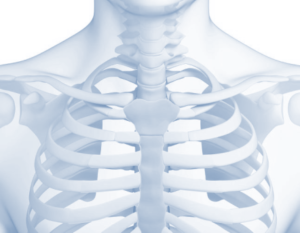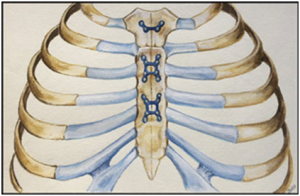Sternum Pain, Clicking or Popping in your Chest Bone after Heart Surgery?
Earlier, we shared some tips on How to Live a Heart Healthy Lifestyle and reduce your risks of developing heart disease. Unfortunately, heart disease is the leading cause of death in the United States for both men and women. The high prevalence of heart disease in the US has made heart surgery one of the most common procedures performed in the US.
We interviewed Dr. Michael Rose to learn more about the specialized procedure he offers to patients suffering from sternal nonunion and instability. This complication occurs in about two to three percent of patients who undergo heart surgery and often goes undiagnosed, leaving many patients feeling hopeless.
What causes sternal nonunion and instability?
During heart surgery, the sternum is split to provide access to the heart. The sternum is wired back together after the surgery to facilitate proper healing. During the healing phase, the wired sternum is vulnerable to the expansion of breathing muscles, which may loosen the wires over time. Too much activity, violent sneezing or coughing before the sternum is completely healed can result in incomplete healing of the two sides of the bone.
If after heart surgery, you experience…
- Pain, clicking, popping, or grinding in your breastbone
- Unstable feeling in the chest
- The feeling that each side of your rib cage moves separately when breathing
…Then, you may have sternal nonunion and instability.
What can be done to treat sternal nonunion and instability?
Chest wall stabilization has been proven to be an effective treatment for this condition. This procedure uses titanium metal plates to bridge the fractured bone and give it the much-needed stability it lacks. Chest wall stabilization has low recurrence and complication rates. In a review of treatments for sternal nonunion and instability in the Annals of Plastic Surgery published in January 2005, all subjects who underwent the above-mentioned procedure experienced a successful outcome. The pain was completely resolved in all patients, wounds healed to completion, and there was no incidence of subsequent infection.
About the Author: Dr. Michael Rose
Dr. Michael Rose, MD, FACS, has been performing Chest Wall Stabilization for over a decade. Nearly 100 percent of his patients have experienced healing of chest wall instability. Double board certified in plastic surgery and general surgery, Dr. Rose specializes in a range of procedures, including breast augmentation, tummy tucks, facelifts, and liposuction.



